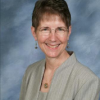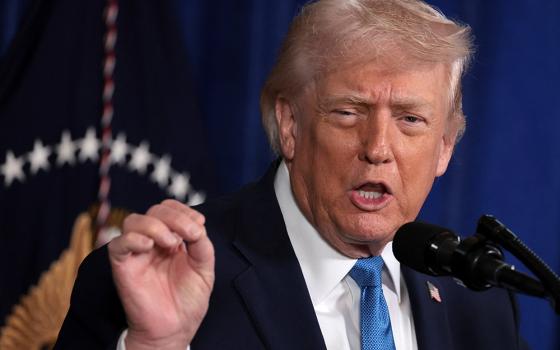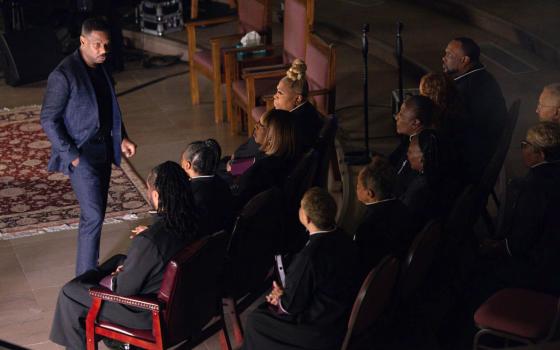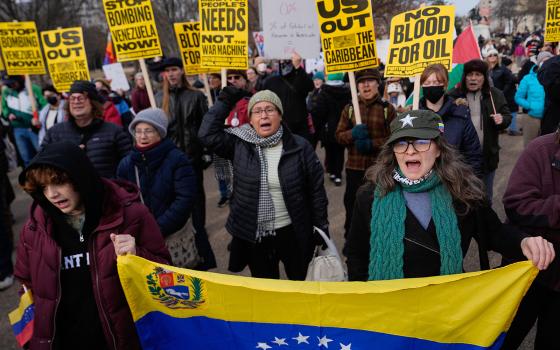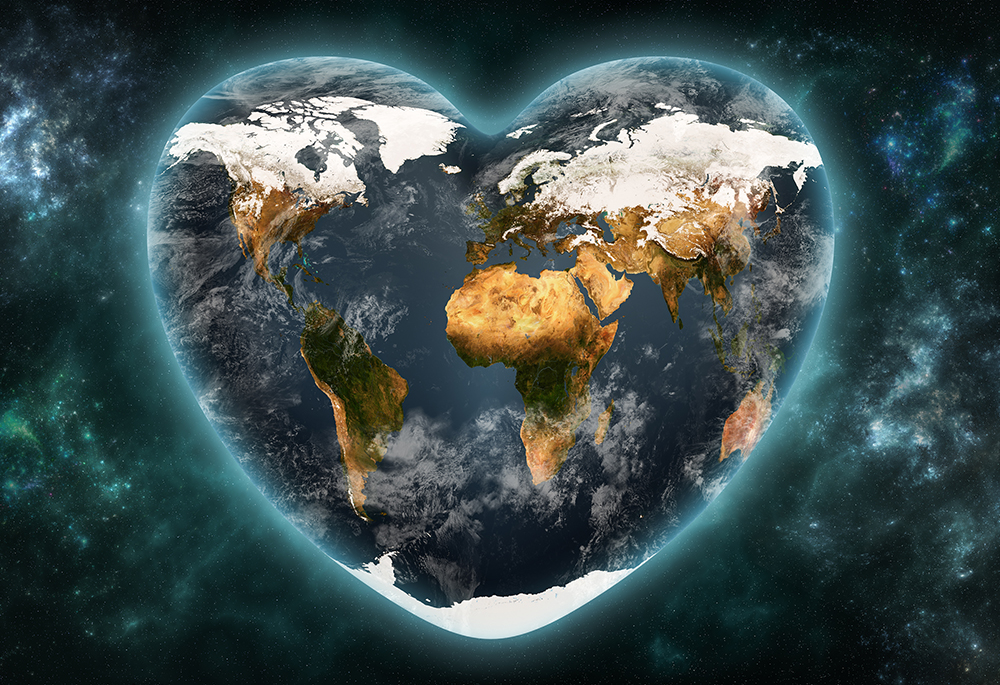
(Depositphotos.com/MattLphotography)
Christmas lights sparkle through the neighborhoods. Christmas music fills the stores. Wrapping paper and ribbons create festive gifts. Parties are planned. Families and friends gather. It is the Christmas season once again.
As preparations for Christmas begin earlier and earlier what is becoming more overlooked is the season of Advent. It is a quieter time; a time of waiting; a time to prepare oneself. Advent invites us to reflect on the historical birth of Jesus and the future yet to be — the second coming. Advent is a time of hope.
Given the world we live in "hope" is certainly needed. We are surrounded by violence among nations and within nations, hunger and famine, the dislocation of thousands of people now refugees in search of a new home. The anger and negative rhetoric that fill the airwaves also create a sensation that that is all there is. Why wouldn't you imagine the future reflecting a dystopian perspective where there is great suffering and injustice?
And yet, Advent is a season of hope celebrating a historical moment and a yet-to-be cosmic event. Advent invites us to reflect on the insights of our ancestors in faith and continue to deepen that experience, freeing us to encounter anew the gifts of the Incarnation and the second coming.
The Scripture readings in Advent are filled with the prophet Isaiah's hopeful vision, beautifully expressed in images and words that stir our hearts with possibility. We hear: "They shall beat their swords into plowshares and their spears into pruning hooks; one nation shall not raise the sword against another, nor shall they train for war again" (Isaiah 2:4); and "Justice shall be the band around his waist, and faithfulness a belt upon his hips. Then the wolf shall be a guest of the lamb, and the leopard shall lie down with the kid; the calf and the young lion shall browse together, with a little child to guide them" (Isaiah 11:5-6). Psalm 85 poetically captures that vision: "Kindness and truth shall meet; justice and peace shall kiss."
For the Hebrew community, Jesus embodied that vision. He became God's love incarnate.
Advertisement
There was a deep understanding that the Divine and the human were connected; that God was personal and intimate, as well as transcendent and omnipotent. Decades after Jesus' death the priests and scholars would debate how this could be and over time they articulated within the philosophical and theological framework of their historical time that Jesus was both human and divine.
The religious imagination offered us a sense of that intimate, loving God in the Gospel accounts of Jesus' birth. We are brought into the birthing room where Mary delivers the infant Jesus to the world. We can sense his vulnerability, his innocence, his beauty. He grows up and the Gospel parables, sermons and miracles reflect and amplify the prophetic hope of the prophets. We even witness Jesus' suffering and death on the cross. Unjustly accused, we sense the agony of a mother, friends and followers. Jesus, divine love incarnate, has lived and died.
The situation seemed pretty dire after Jesus' death and yet there was an impulse, a mystical knowing that divine love was still present and, in fact, would come in fullness at the end of time with the second coming.
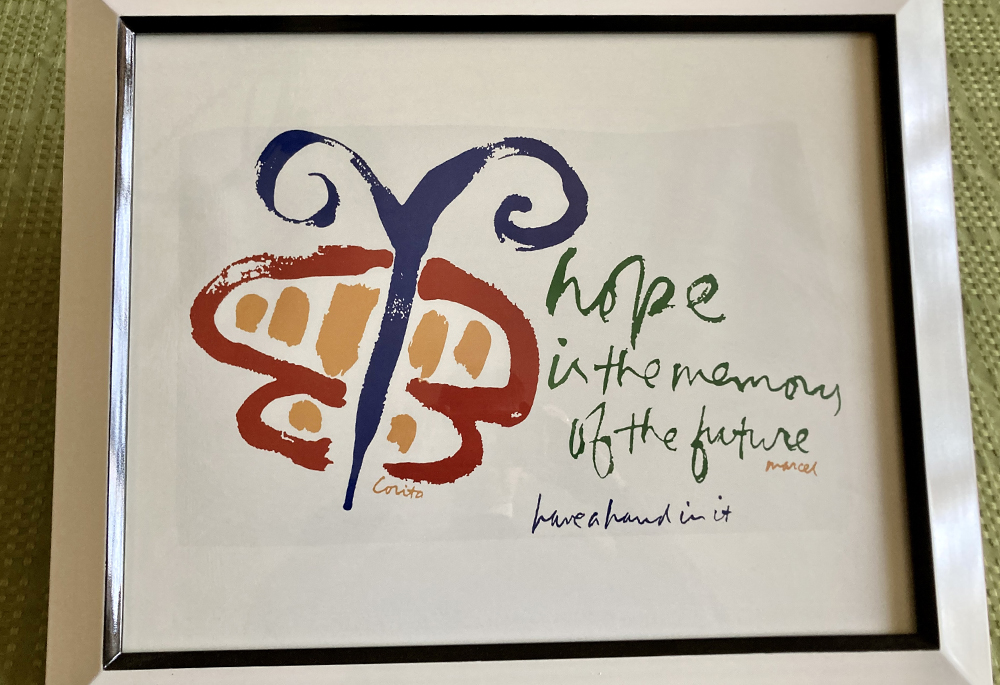
Artwork by Corita Kent reads "Hope is the memory of the future ... have a hand in it." The poster was given to Sr. Nancy Sylvester by Kent's Immaculate Heart of Mary community in Los Angeles. (Courtesy of Nancy Sylvester)
Today, over 2,000 years later, we continue to remember the birth of the historical Jesus and celebrate it at Christmas. However, the very world in which Jesus lived we now understand in new ways thanks to the James Webb telescope, the insights of evolution, quantum physics, the development of consciousness and other social sciences. These insights reveal to us that we are all interconnected across space and time, that evolution continues, and that this next emergence is dependent on our consciousness — a consciousness that for Christians involves putting on the mind of Christ or Christ consciousness. What each of us chooses to do affects the future. The Incarnation of divine love continues through us and the second coming depends on us continuing to live the prophetic vision fulfilled in Jesus. The "hope" of the future is emerging as we remember Jesus' life and choose to live accordingly.
Pierre Teilhard de Chardin, a Jesuit priest, evolutionary thinker, paleontologist, mystic, and theologian lived from 1881-1955. He understood the implications of these scientific shifts in relation to our faith. He also understood the suffering and horror of war having been a stretcher-bearer in World War I. His writing poetically gives voice to a renewed understanding of the Incarnation and the Second Coming; of the experience of the vastness and intimacy of God; of the hope that is calling us from the future.
Teilhard writes:
- God is as pervasive and perceptible as the atmosphere in which we are bathed. He encompasses us on all sides, like the world itself. What prevents you, then, from enfolding him in your arms? (The Divine Milieu);
- We shall never know all that the Incarnation still expects of the world's potentialities (The Divine Milieu);
- We are inevitably approaching a new age, in which the world will throw off its chains and at last give itself up to the power of its inner affinities. Either we must doubt the value of everything around us, or we must utterly believe in the possibility, and I should now add in the inevitable consequences, of universal love (Human Energy);
- As the transformation follows its natural line of progress we can foresee the time when humanity will understand what it is, animated by one single heart, to be united together in wanting, hoping for, and loving the same things at the same time. The humankind of tomorrow is emerging from the mists of the future, and we can actually see it taking shape: a super-humankind, much more conscious, much more powerful, and much more unanimous than our own (Toward the Future).
Advent affords us the time to remember the birth of the historical Jesus and to remember his life as showing us how to live. In that memory is hope, a hope that finds its fulfillment in the yet-to-be cosmic event — the second coming. A poster of Corita Kent's captures this as well. She says: Hope is the memory of the future … have a hand in it.
This Advent and Christmas season take some time to ponder both the Incarnation and the second coming through the lens of these words. Let them stir your heart. Then deepen them through your contemplative practice. Our future is in need of us. May we all have a hand in creating it.
